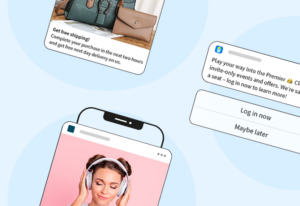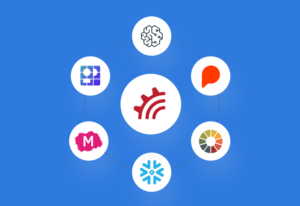Especially for enterprise retail marketers, a successful holiday messaging is born many months before it’s ever actually executed. Now is the time that these marketers are refining their plans to be ready to put it into action when November comes along. So much is riding on Black Friday and Cyber Monday — then, after that, the subsequent holiday shopping season — that it’s not a time when you can afford costly mistakes with your current ESP.
Unfortunately, with the popular remote ESPs — Salesforce Marketing Cloud, Adobe Campaign, Braze, Iterable, etc. — those mistakes are sadly common and even expected. Here are three steps you can take to make your holiday season with them as smooth as possible, along with the ways MessageGears eliminates these issues completely.
Make sure they can handle your inevitable volume increase
This is one of the main reasons you need to communicate your plans with your provider. Enterprise brands send millions of messages throughout the holiday season, which could create major problems for ESPs even if they think they’re ready for what’s coming.
You’ll probably have sales built around particular times, maybe not limited to Black Friday and Cyber Monday. Make sure your provider can send your messages promptly across all channels, and that those are going to be synced up. You don’t want to alert your recipients of the sale after it’s already over, or to have your messaging be different in email than it is in push and SMS.
This means communicating with your ESP well ahead of time about the expected increases so that both of you can take any steps you might need to ensure all your campaigns are being delivered to the right people and channel at the time you need them to be sent.
These are conversations we make an effort to proactively have with our clients to ensure all of us are on the same page, and there are never any surprises. Because our unique setup allows you to work directly with your live data, we’re able to scale up your sends quickly and easily, without any interruptions or challenges with the timeliness of your campaign deliveries.
Will someone from my ESP be available to help during the busy rush?
What’s the plan if something goes wrong during the big Black Friday/Cyber Monday weekend? Will someone be available to answer the phone and assist with an issue, or will you have to rely on standard support tickets? It can be demoralizing to find out your agreement with your provider doesn’t include critical access when things go wrong.
And with so many of the big messaging providers like Salesforce, that’s exactly what you should expect — virtually no help if things go wrong. They have so many clients, and they’ve never prioritized customer support in any significant way. If you’re with one of these sorts of providers, be sure to review your service-level agreement in advance of the holiday season and even have a conversation with them before the major rush starts to make sure you at least understand what to expect in the event of a problem.
At MessageGears, we pride ourselves on white-glove service for all of our clients, with 24/7 customer support from a real person and immediate response to any significant issues. We can do this because it’s something we’ve prioritized from the beginning, and our clients know the support is there if they need it at the most critical time.
What’s my backup plan?
Especially if you know your ESP can’t be counted on to assist if things take a turn south, make sure to have a fall-back option ready. Data not syncing as quickly as you need it to for some of your dynamic content? Plan a generic version that you can quickly get ready to send in its place. Emails getting delayed because your ESP is overloaded? Maybe you can turn your attention to mobile push or SMS for the time being. What’s the plan when email comes back online? You might still want to send the delayed campaigns, or maybe that won’t make sense and you’ll have to change them to maintain their relevance — or scrap them altogether.
This is the holiday season. Things are going to get hectic. They always do. But preparing ahead will make you far more comfortable and prevent total panic when something breaks. The brands that are better able to roll with the punches will be the ones that come out the other side of the holiday season feeling like it was a success.
One of the advantages of being a MessageGears client is that there are just fewer things to mess up. Because you’re not shipping your data up to us and are able to use it as it sits in your database, that’s one fewer moving part to break or slow down during a busy time. We don’t hold your data, simply providing you with the tools you need to put your data to use for building personalized cross-channel campaigns, and then utilizing the cloud to get them out the door.
Takeaways
The holiday season is a very busy and often stressful time for enterprise B2C marketers, and we know how important it is that your messaging campaigns reach customers in a timely and efficient manner. A little bit of thinking ahead now by communicating with your ESP and formulating a Plan B, C, D, etc., will prevent a ton of headaches later.
And if these problems are familiar to you and your marketing team, we’d love to talk to you about how MessageGears does the holidays differently from any other ESP. Tired of bracing yourself for everything to go wrong every November and December? Let’s make the holidays the best time of the year instead.






